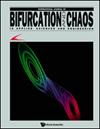Study of Short-Term and Long-Term Memories by Hodgkin–Huxley Memristor
IF 2.3
4区 数学
Q2 MATHEMATICS, INTERDISCIPLINARY APPLICATIONS
引用次数: 0
Abstract
Long-term memory (LTM ) and short-term memory (STM ) and their evolution from one to the other are important mechanisms to understand brain memory. We use the Hodgkin–Huxley (HH ) model, a well-tested and closest model to biological neurons and synapses, to shine some light on LTM and STM memorization mechanisms. The role of and ion channels playing in LTM and STM process is carefully examined by using three different types of input signals, namely, a step DC voltage, a positive part of sinusoidal wave and periodic square signal with read voltage. Results are analyzed based on first-ordermemristor and second-ordermemristor.
利用霍奇金-赫胥黎记忆器研究短期和长期记忆
长期记忆(LTM)和短期记忆(STM)以及它们之间的演变是理解大脑记忆的重要机制。我们利用霍奇金-赫胥黎(HH)模型来揭示 LTM 和 STM 记忆机制,该模型是经过验证的最接近生物神经元和突触的模型。通过使用三种不同类型的输入信号,即阶跃直流电压、正弦波的正向部分和带读取电压的周期性方波信号,仔细研究了 Na+ 和 K+ 离子通道在 LTM 和 STM 过程中的作用。分析结果基于一阶 K+ 晶振和二阶 Na+ 晶振。
本文章由计算机程序翻译,如有差异,请以英文原文为准。
求助全文
约1分钟内获得全文
求助全文
来源期刊
CiteScore
4.10
自引率
13.60%
发文量
237
审稿时长
2-4 weeks
期刊介绍:
The International Journal of Bifurcation and Chaos is widely regarded as a leading journal in the exciting fields of chaos theory and nonlinear science. Represented by an international editorial board comprising top researchers from a wide variety of disciplines, it is setting high standards in scientific and production quality. The journal has been reputedly acclaimed by the scientific community around the world, and has featured many important papers by leading researchers from various areas of applied sciences and engineering.
The discipline of chaos theory has created a universal paradigm, a scientific parlance, and a mathematical tool for grappling with complex dynamical phenomena. In every field of applied sciences (astronomy, atmospheric sciences, biology, chemistry, economics, geophysics, life and medical sciences, physics, social sciences, ecology, etc.) and engineering (aerospace, chemical, electronic, civil, computer, information, mechanical, software, telecommunication, etc.), the local and global manifestations of chaos and bifurcation have burst forth in an unprecedented universality, linking scientists heretofore unfamiliar with one another''s fields, and offering an opportunity to reshape our grasp of reality.

 求助内容:
求助内容: 应助结果提醒方式:
应助结果提醒方式:


